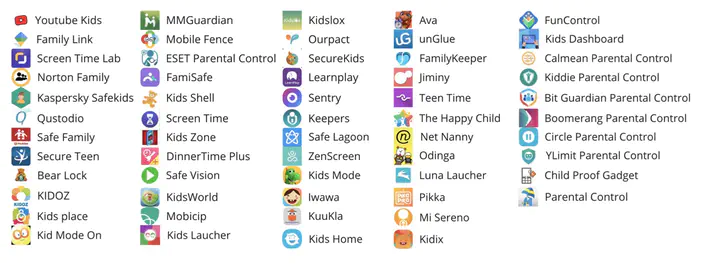Protection or Punishment? Relating the Design Space of Parental Control Apps and Perceptions about Them to Support Parenting for Online Safety
 The Design Space of Parental Control Apps
The Design Space of Parental Control AppsAbstract
Parental control apps, which are mobile apps that allow parents to monitor and restrict their children’s activities online, are becoming increasingly adopted by parents as a means of safeguarding their children’s online safety. However, it is not clear whether these apps are always beneficial or effective in what they aim to do; for instance, the overuse of restriction and surveillance has been found to undermine parent-child relationship and children’s sense of autonomy. While previous research has categorised and taken inventory of key features of popular parental control apps, they have not systematically analysed the ways such features were designed or realised in such apps, or in particular how aspects of such designs might relate to parents and children’s experiences with such apps. In this work, we investigate this gap, asking specifically: how might children’s and parents’ perceptions be related to how parental control features were designed? To investigate this question, we conducted an analysis of 58 top Android parental control apps designed for the purpose of promoting children’s online safety, finding three major axes of variation in how key restriction and monitoring features were realised: granularity, feedback/transparency, and parent-child communications support. To relate these axes to perceived benefits and problems, we then analysed 3264 app reviews to identify references to aspects of the each of the axes above, to understand children’s and parents’ views of how such dimensions related to their experiences with these apps. Our findings led towards 1) an understanding of how parental control apps realise their functionalities differently along three axes of variation, 2) an analysis of exactly the ways that such variation influences children’s and parents’ perceptions, respectively of the usefulness or effectiveness of these apps, and finally 3) an identification of design recommendations and opportunities for future apps by contextualising our findings within existing digital parenting theories.